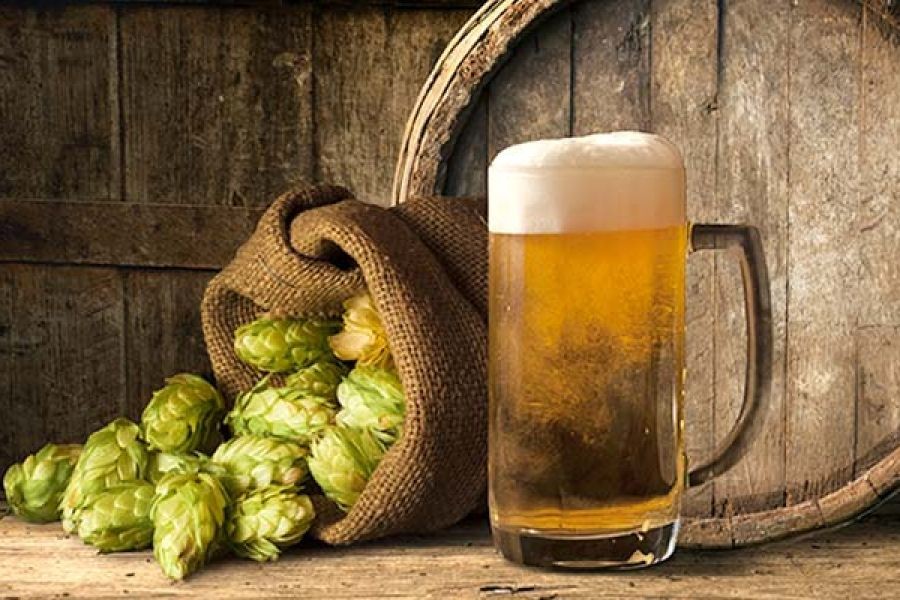Did you know that homebrewing is gaining immense popularity in Australia, yet many enthusiasts face the frustration of subpar results? If you've tried your hand at brewing your own beer, only to find it tastes less than stellar, you're not alone. With the rise of craft beer culture down under, it's no surprise that more people are experimenting with homebrewing. However, achieving that perfect brew can be elusive. Let's explore seven common reasons why your homebrewed beer might taste awful and, more importantly, how to fix it.
1. Poor Sanitation Practices
Sanitation is a critical aspect of homebrewing. Any lapse in cleanliness can introduce unwanted bacteria or wild yeast into your brew, leading to off-flavors. In Australia's warm climate, it's particularly important to maintain strict sanitation practices to prevent such issues.
Solution: Ensure all equipment is thoroughly sanitized before and after use. Use a no-rinse sanitizer and routinely clean your brewing area. This simple step can significantly improve the quality of your beer.
2. Incorrect Fermentation Temperature
Fermentation temperature plays a crucial role in determining the final taste of your beer. Yeast activity is sensitive to temperature, and fluctuations can lead to undesirable flavors.
Solution: Use a temperature-controlled environment to maintain consistent fermentation temperatures. In Australia, where temperatures can vary greatly, consider investing in a fermentation chamber or fridge with a temperature controller.
3. Poor Quality Ingredients
The quality of your ingredients directly impacts the taste of your beer. Using stale or low-quality malt, hops, or yeast can result in a lackluster brew.
Solution: Source fresh, high-quality ingredients from reputable suppliers. Consider local Australian suppliers for fresh hops and malt, which can enhance the authenticity and flavor profile of your beer.
4. Incorrect Water Chemistry
The composition of your water can significantly affect the brewing process and the final taste of your beer. Hard or chlorinated water can lead to off-flavors.
Solution: Use filtered water or consider testing and adjusting your water chemistry to match the style of beer you are brewing. Many Australian homebrewers find success by mimicking the water profiles of famous brewing regions.
5. Over-Carbonation
High levels of carbonation can create a gushing effect or an overly fizzy beer, which can mask the intended flavors.
Solution: Carefully measure priming sugar and ensure proper mixing before bottling. Using carbonation calculators can help achieve the desired level of carbonation for your beer style.
6. Insufficient Conditioning Time
Rushing the conditioning process can lead to an immature-tasting beer. Beer needs time to develop its full flavor profile during conditioning.
Solution: Allow your beer to condition for the recommended time, typically a minimum of two weeks. Patience is key to achieving a well-rounded flavor.
7. Faulty Equipment
Using damaged or worn-out equipment can introduce off-flavors into your beer. For instance, scratched plastic can harbor bacteria, affecting the quality of the brew.
Solution: Regularly inspect and maintain your brewing equipment. Replace any faulty items promptly to ensure a smooth brewing process.
Case Study: Australian Brewer's Success Story
Problem: A Melbourne-based homebrewer struggled with inconsistent beer quality, often experiencing off-flavors and flat beer due to poor fermentation control and sanitation lapses.
Action: The brewer invested in a temperature-controlled fermentation chamber and adhered to a strict sanitation regimen. They also sourced high-quality ingredients from local suppliers.
Result: After implementing these changes, the brewer noted a 60% improvement in beer quality, receiving positive feedback from friends and local tasting events.
Takeaway: Consistent fermentation conditions and stringent sanitation are paramount in producing high-quality homebrew. Australian homebrewers can achieve excellent results by focusing on these practices.
Debunking Common Homebrewing Myths
- Myth: "Any water will do." Reality: Water chemistry plays a critical role in brewing. Mimicking the water profile of classic brewing regions can enhance your beer's taste.
- Myth: "The more hops, the better." Reality: Over-hopping can lead to imbalanced flavors. Balance is key to a well-rounded beer.
- Myth: "Beer can condition anywhere." Reality: Conditioning temperature and time significantly affect the final flavor. Proper storage conditions are essential.
Future Trends in Homebrewing
With Australia's craft beer market expected to grow significantly, homebrewing will likely see increased interest and innovation. According to the Australian Bureau of Statistics, the trend towards supporting local and craft beer producers is set to continue, with consumers becoming more adventurous in their flavor preferences.
Final Takeaways
- Maintain strict sanitation practices to prevent contamination.
- Control fermentation temperature for consistent results.
- Use high-quality, fresh ingredients sourced locally when possible.
- Adjust water chemistry to suit your beer style.
- Be patient with conditioning time for the best flavor development.
Are you ready to take your homebrewing to the next level? Share your experiences and tips in the comments below and join our community of Australian homebrewers. Let’s brew better together!
People Also Ask
- How does homebrewing impact the Australian economy? Homebrewing supports local suppliers and fosters a craft beer culture, contributing positively to the economy by encouraging innovation and local production.
- What are common misconceptions about homebrewing? Many believe any water will suffice, but water chemistry is crucial. Also, over-hopping doesn't always enhance flavor; balance is essential.
- What are the best strategies for improving homebrew quality? Focus on sanitation, control fermentation temperatures, and use fresh, high-quality ingredients for the best results.
Related Search Queries
- Why does my homebrew taste bad?
- How to fix off-flavors in beer
- Common homebrewing mistakes
- Best practices for homebrewing in Australia
- How to improve homebrew quality






























